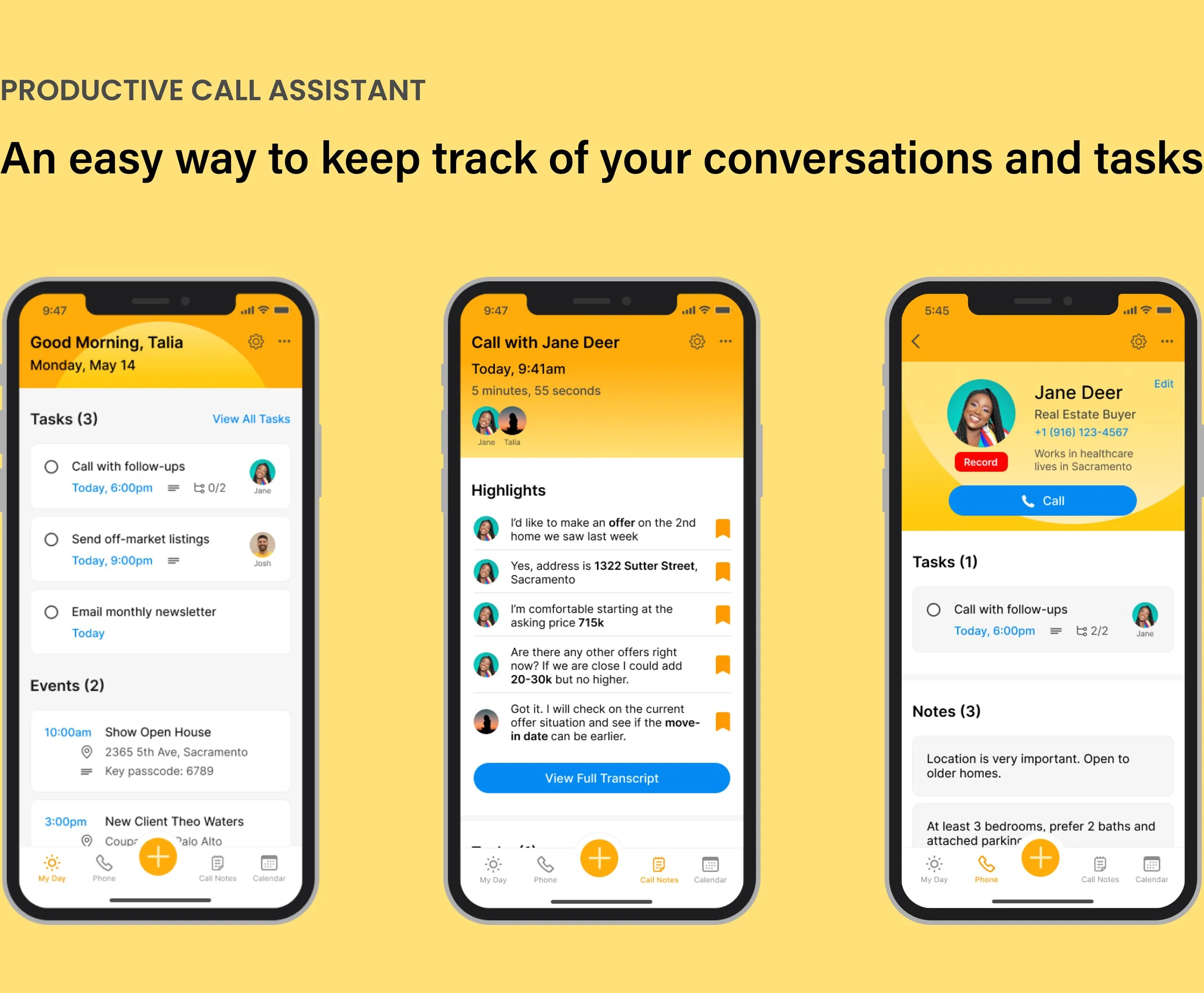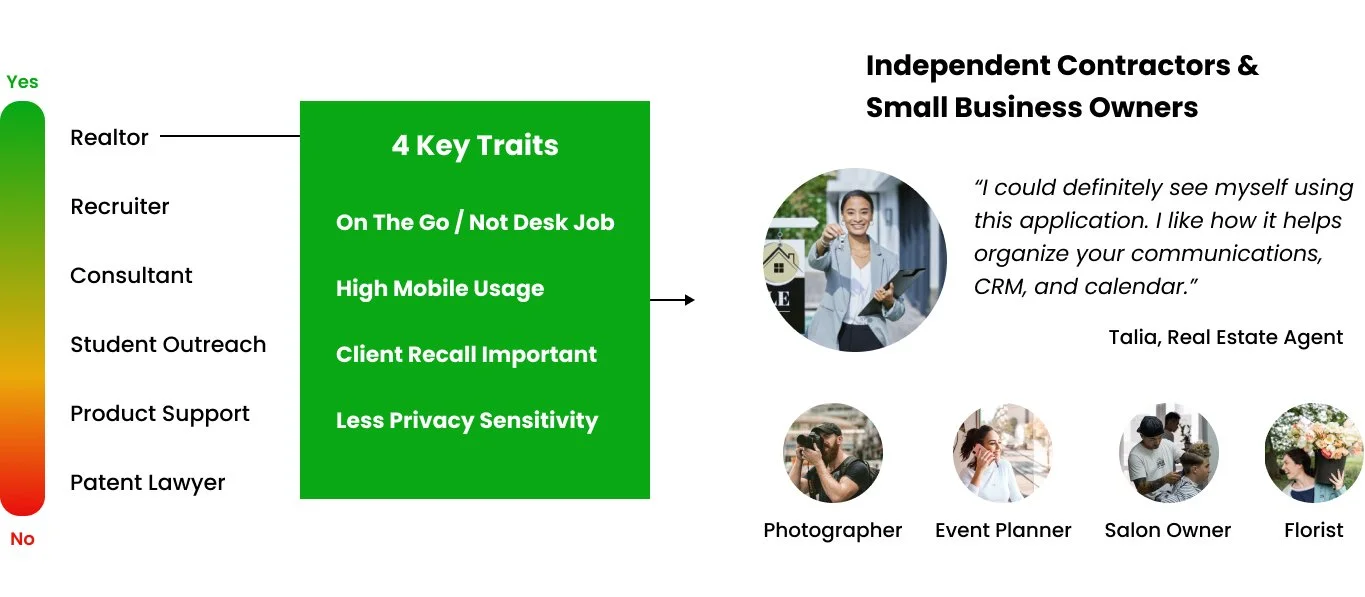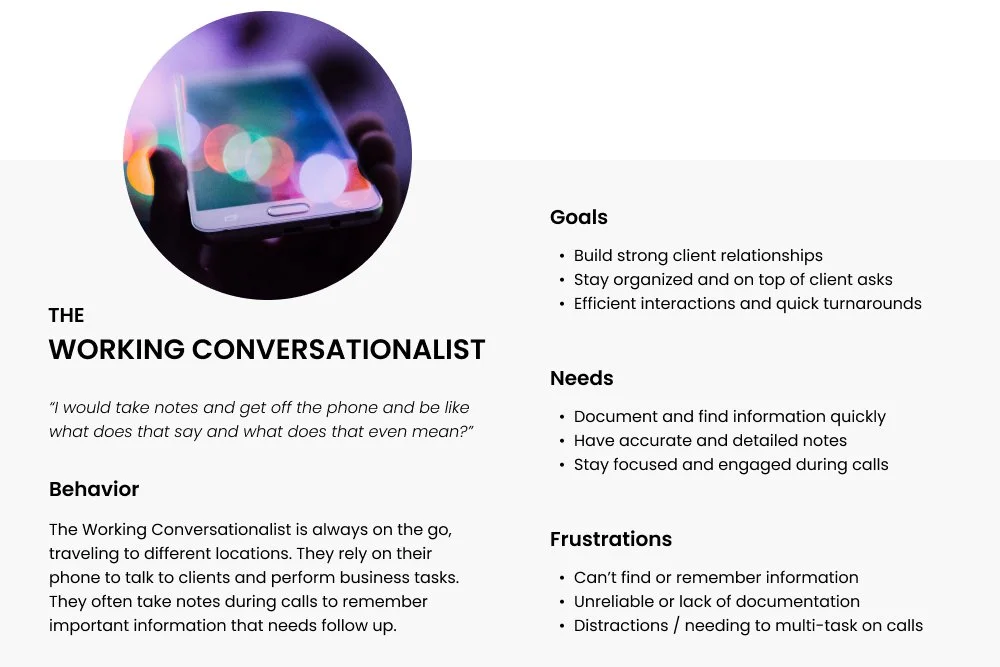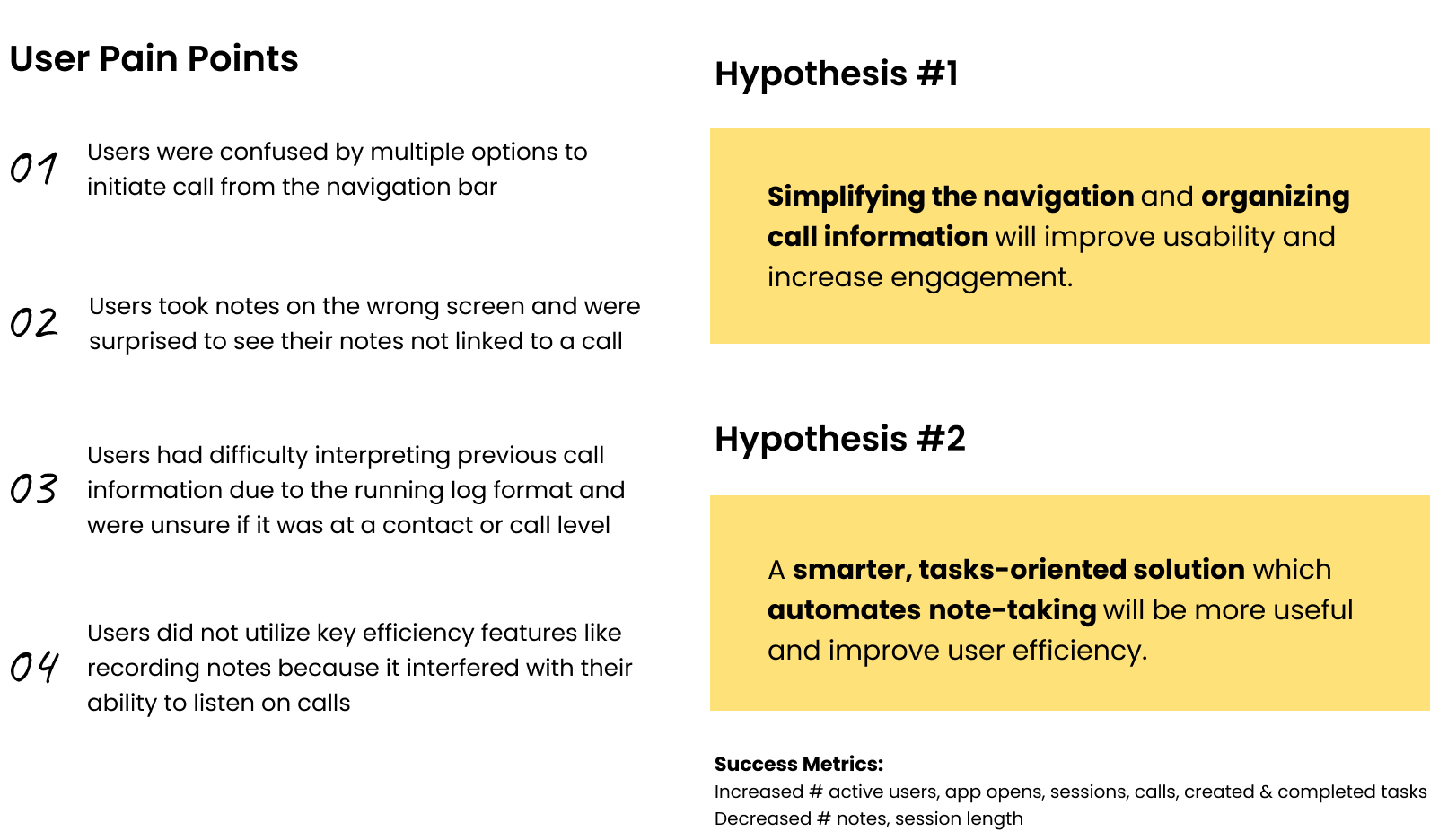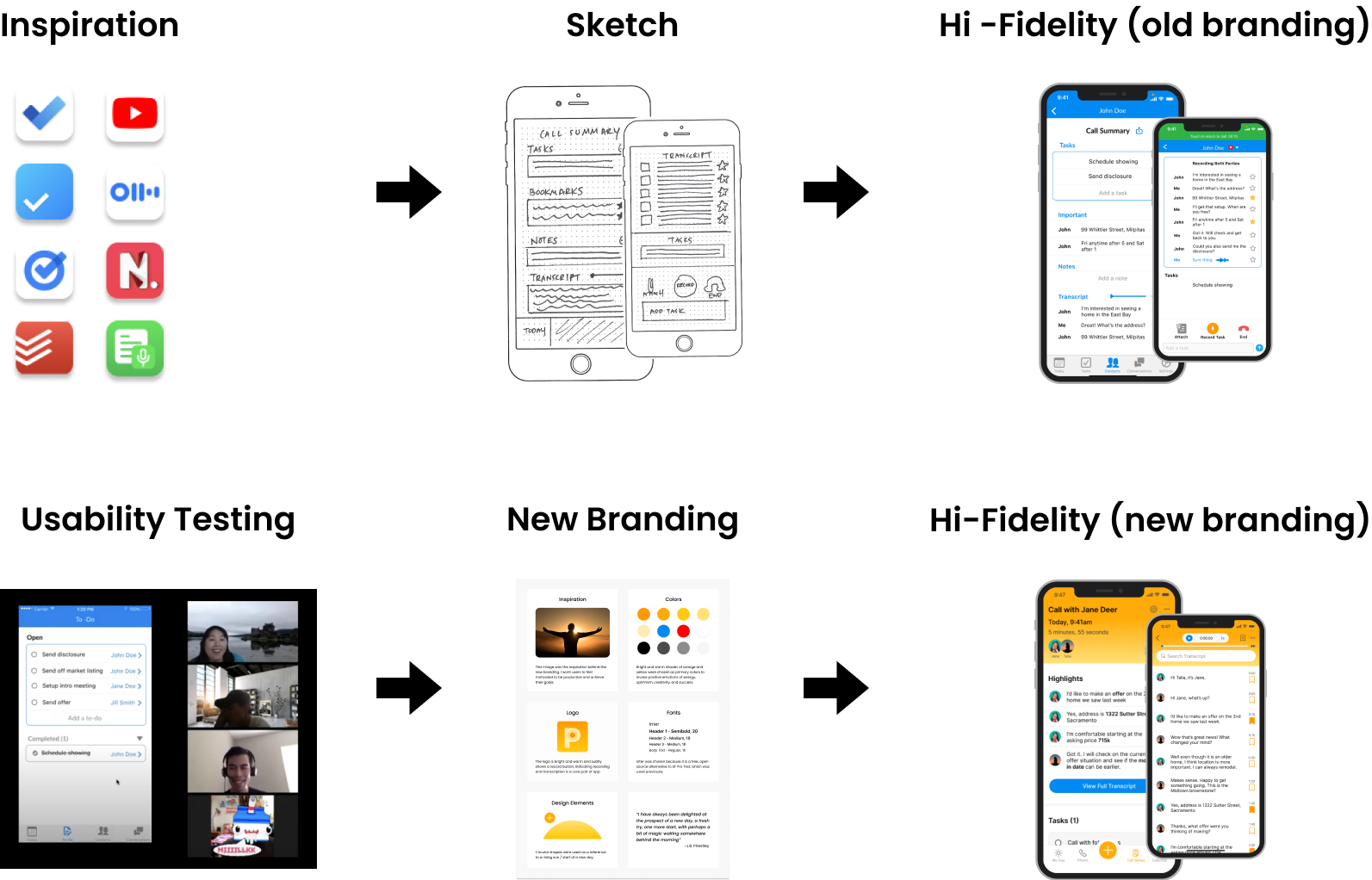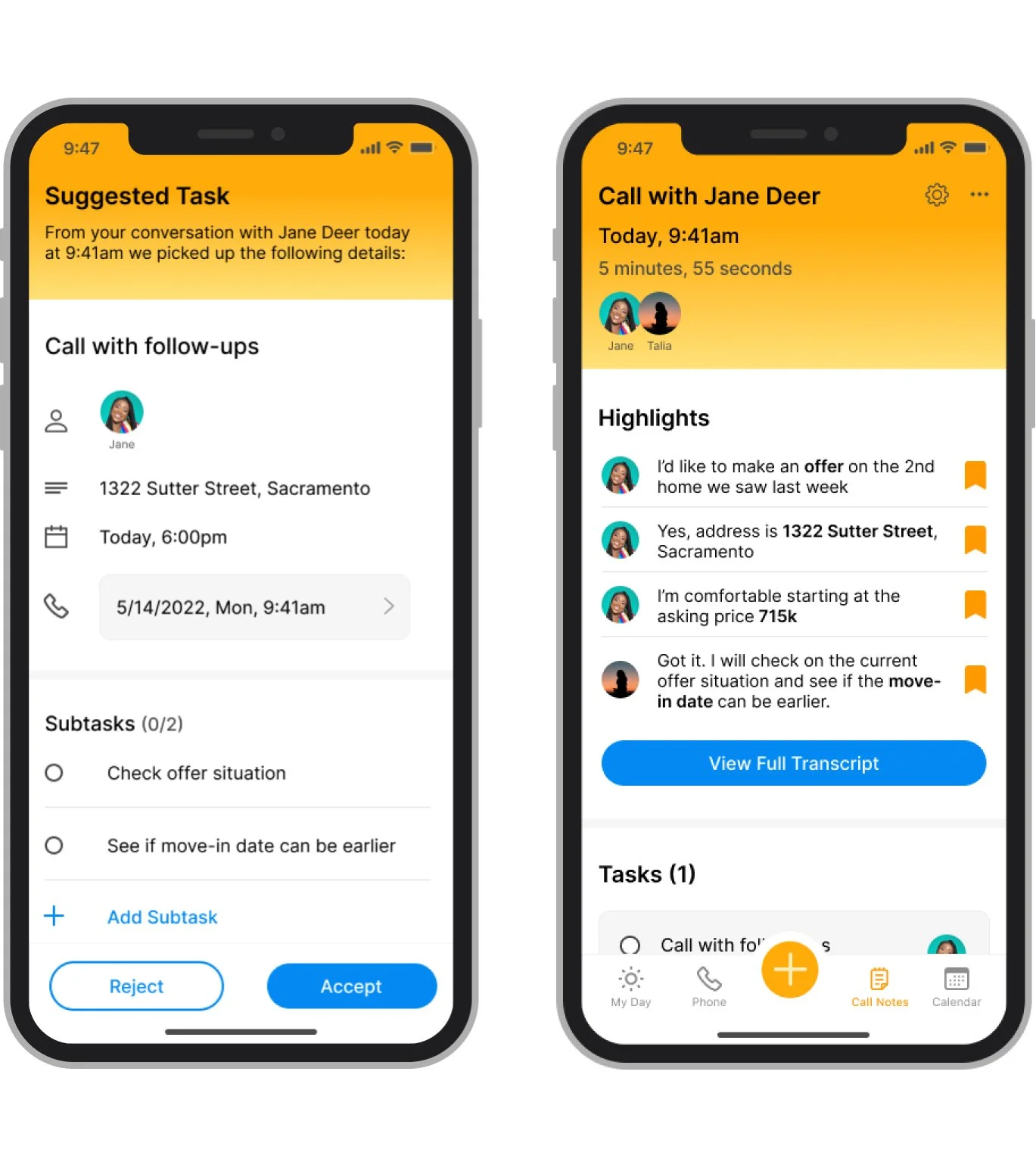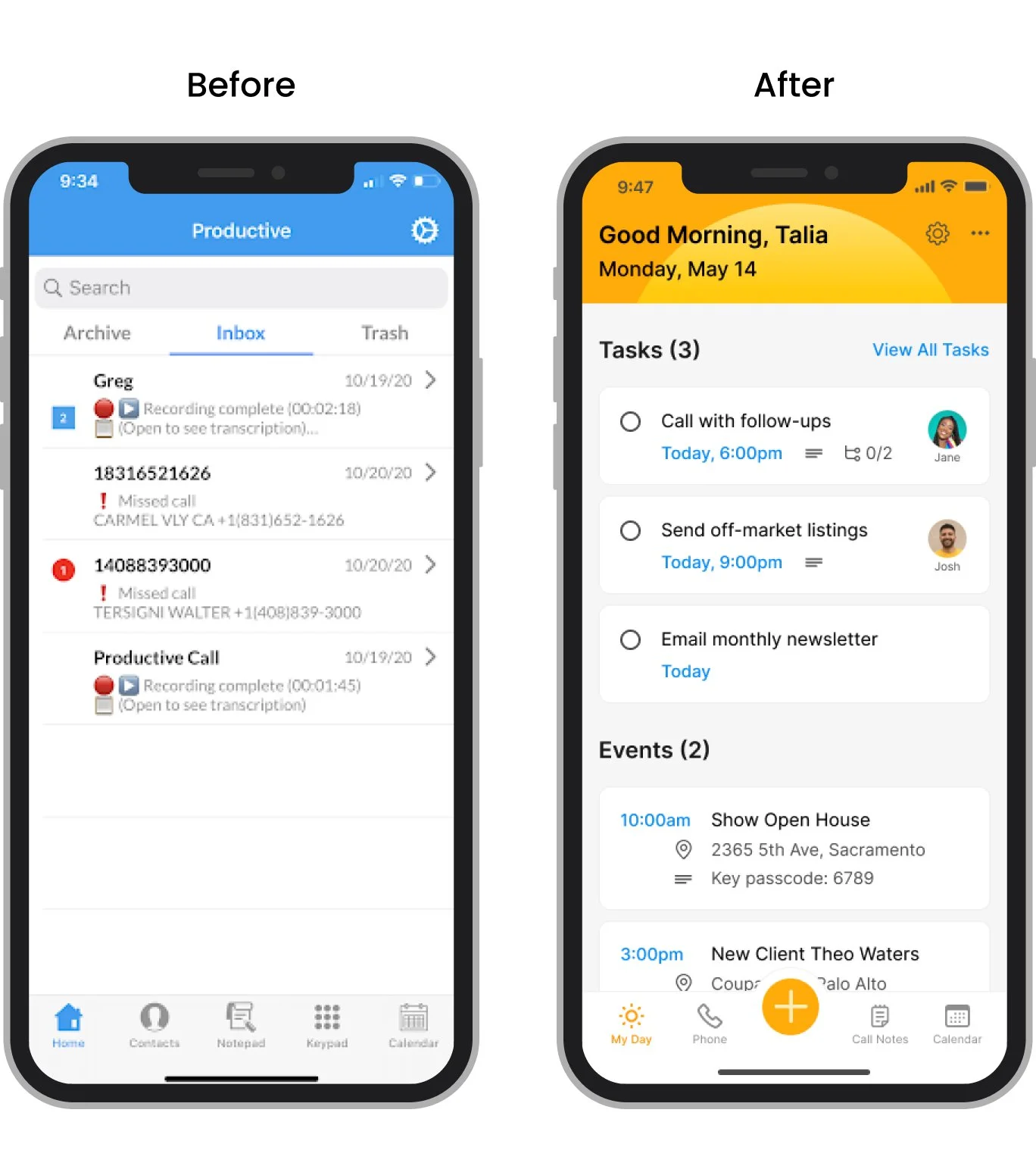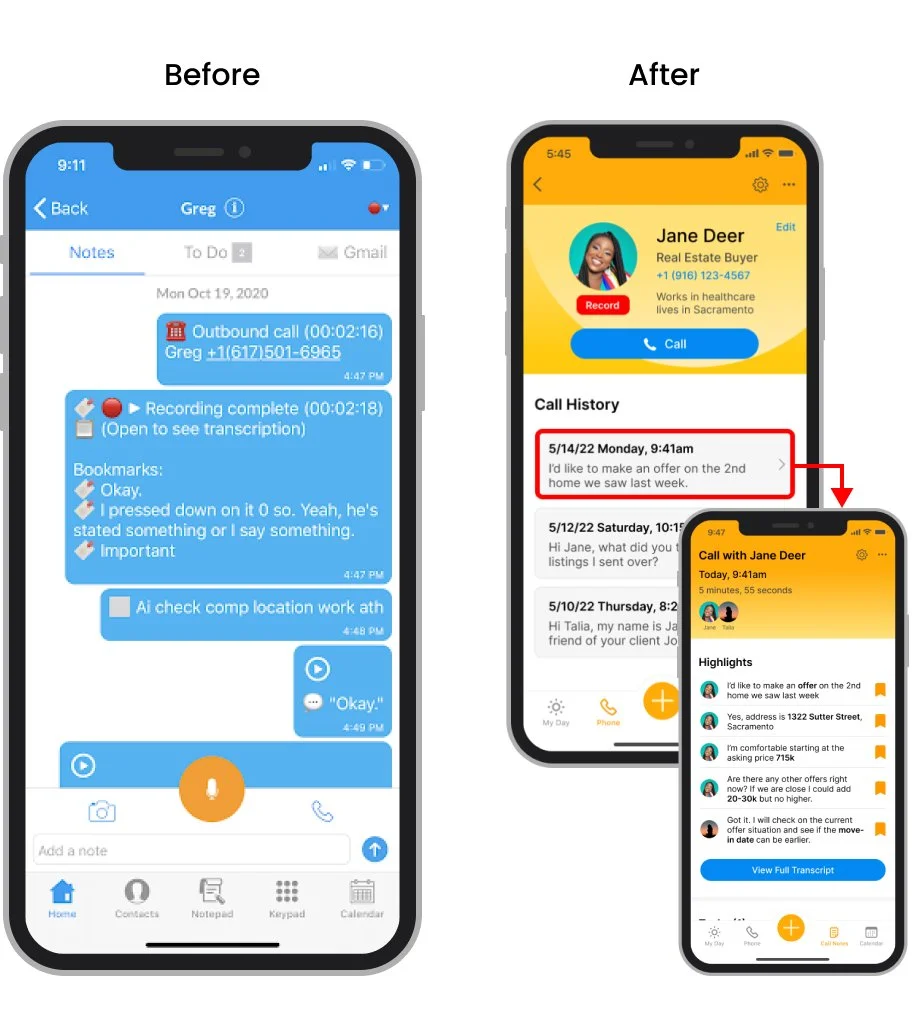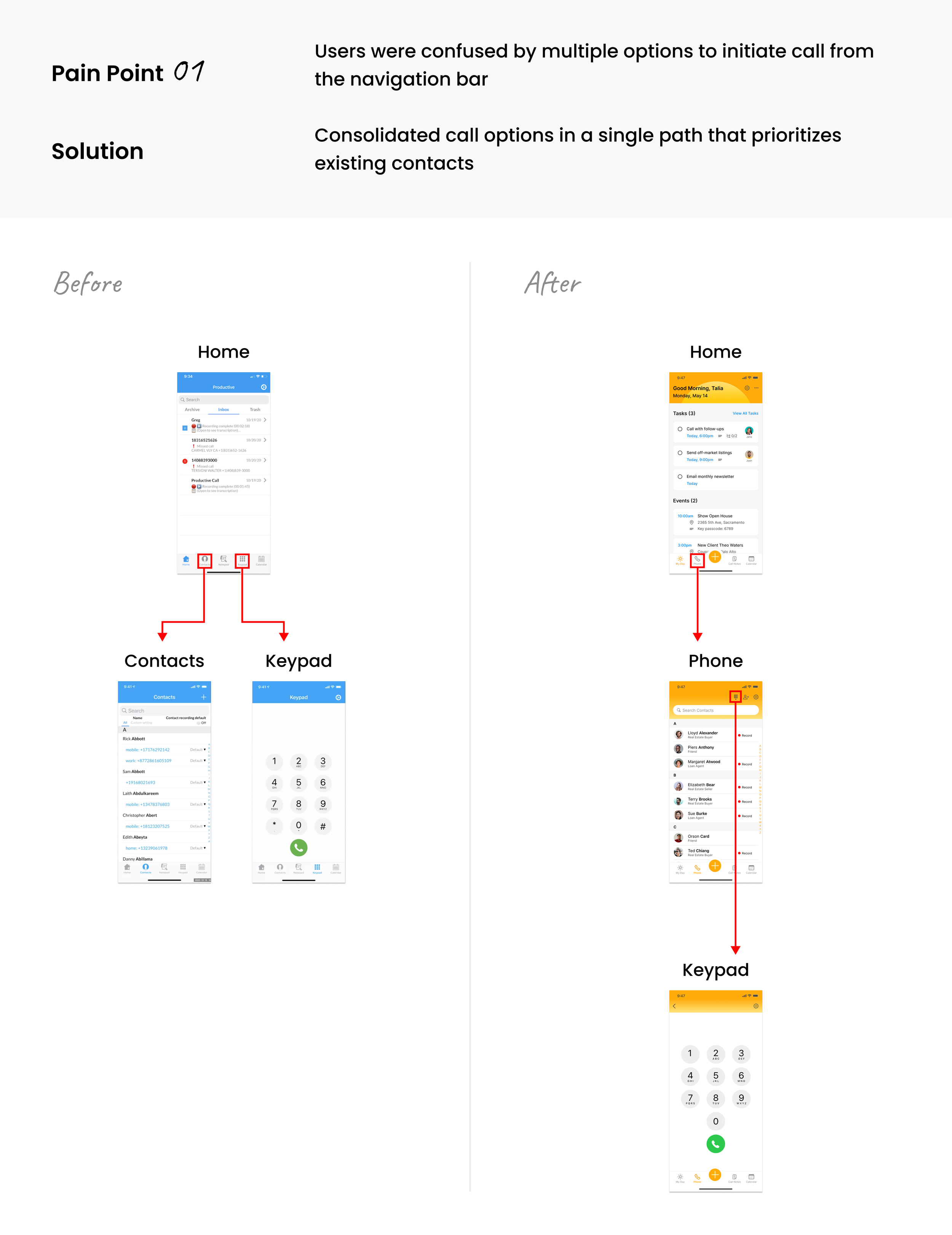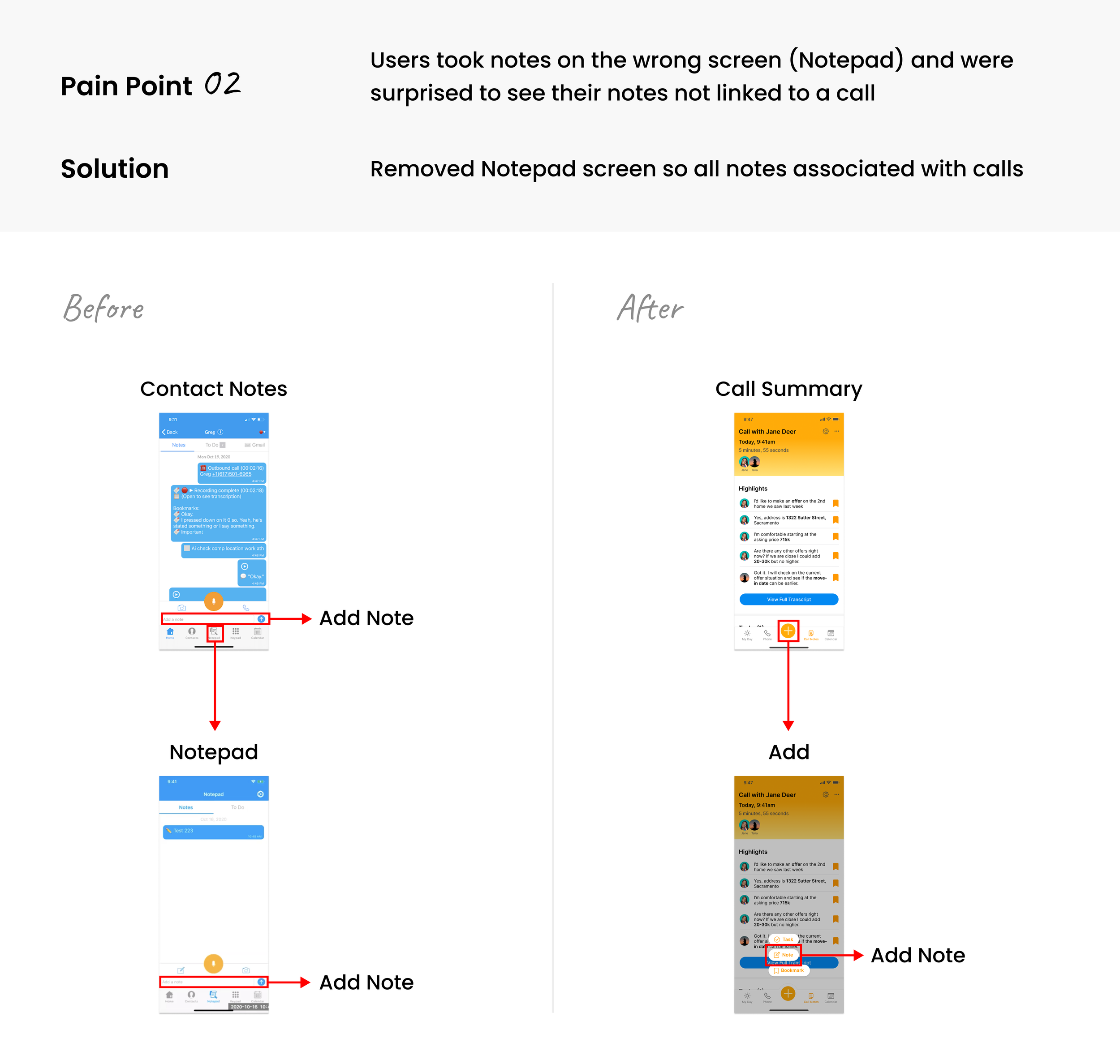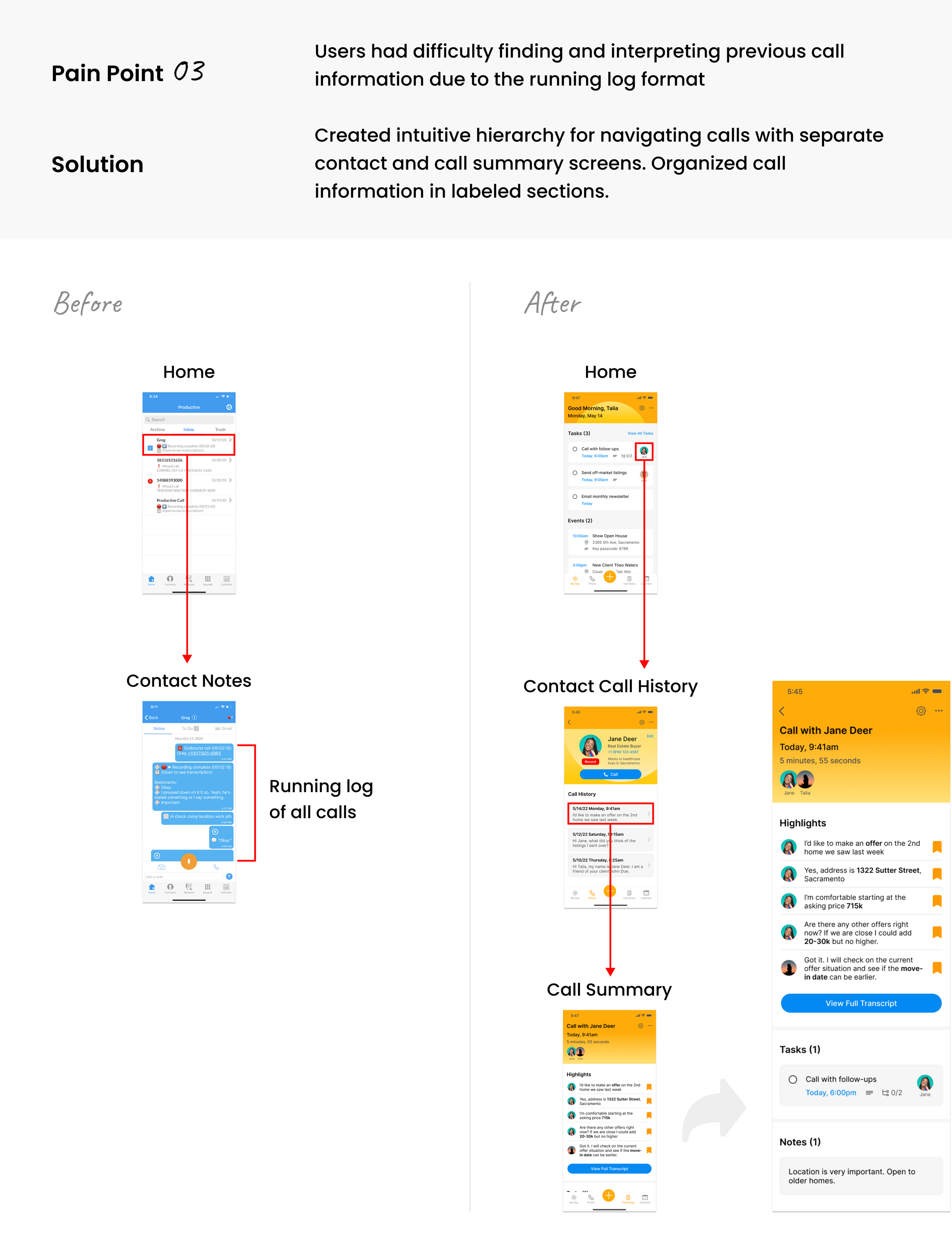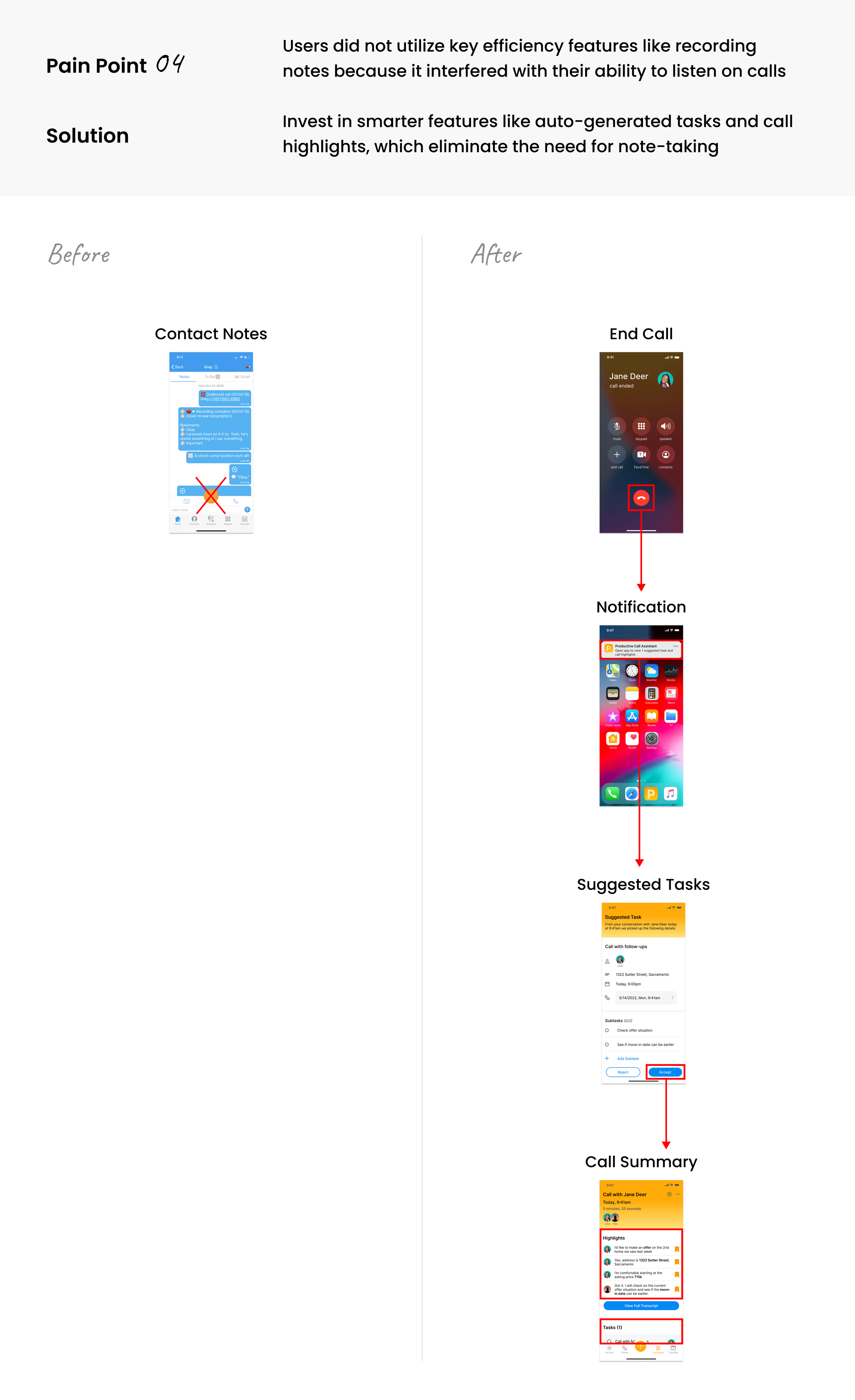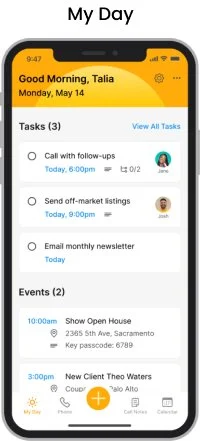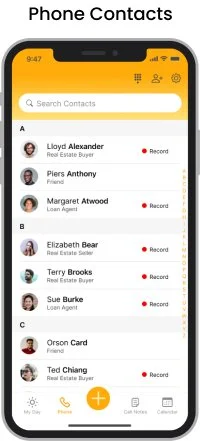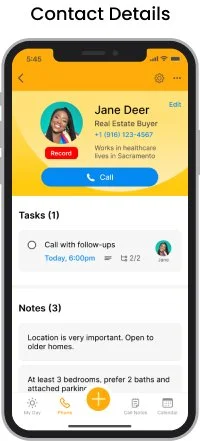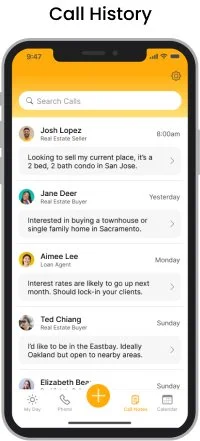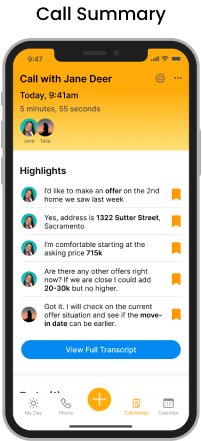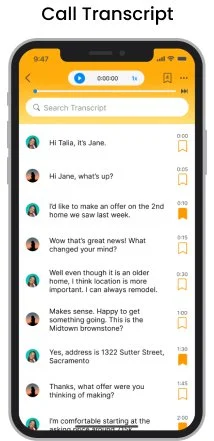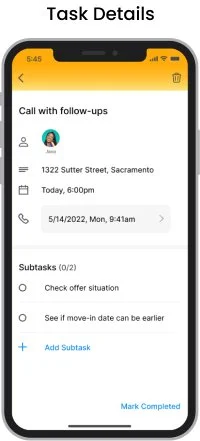
Overview
Productive Call Assistant was created by Phoneic, an early stage startup in Silicon Valley. Phoneic’s mission is to empower productivity by making it easy to work while on the go. They envision creating an all-in-one workspace on the phone where important information from calls are stored and easily accessible. In their beta application, they included features for call recording and transcription, voice notes and tasks, and CRM logging.
My Role
Product Designer & Project Lead
The Team
3 Product Designers, Phoenic CEO, Phoenic Head of Product, and Strategic Consultant
My Contributions
A redesigned, tasks-oriented experience with automated features to simplify note-taking
New branding
User research
Challenge
How might I improve the on call and task management workflows so that Phoneic is able to attract more paying customers?
When we started working with Phoenic, they were exploring product market fit and looking for new customers. They were interested in gathering insights that would help inform a research deep-dive they were going to perform with a strategy consultancy. To narrow our project scope, I worked with Phoenic’s CEO to prioritize areas for each of our designers to focus on:
Onboarding
On Call and Task Management (my area of focus)
CRM Integration
Approach
Defining the Target User
One of the first questions we wanted to answer was who was the user of this application? The Phoenic team had reached out to sales people but did not have a clear customer segment. Therefore, we decided to cast a wide net and interview people who had jobs that involved talking to lots of different people and needing to remember information from calls.
Out of all of the professions we interviewed, the realtor was the most promising. We identified 4 key traits that increased likelihood to use the application and advised Phoenic to target independent contractors and small business owners. After synthesizing our interview insights, I built a target user profile:
User Pain Points and Hypotheses
In order to improve the on call and task management workflows, I wanted to identify any pain points users were having that might prevent them from using the application. I asked users to perform the following tasks: call a contact, take a note, and find previous call information and discovered there were significant usability issues.
Empathize
To get a better sense of how users might use the application, I crafted an user scenario and created a corresponding storyboard:
Design Stages
For inspiration, I looked at applications that had note-taking, task creation, and audio transcription features. I sketched initial concepts and prototyped my ideas using the existing design system/branding. After testing my designs, I refined my solutions and created new branding.
Key Design Solutions
Automated Tasks and Call Highlights
During testing users avoided voice notes, a feature that was intended to make note-taking easier. Users felt that recording notes on calls interfered with their ability to listen and was redundant since the call was being recorded and transcribed. I believe automated tasks and call highlights will resonate more with users as it simplifies their workflow and makes note-taking optional.
Tasks-Oriented Home Screen
The original home screen was not very usable. It contained previous call history in an inbox design, requiring users to go through each caller to see their tasks and notes.
My home screen aggregates important information from all calls, showing users their outstanding tasks and upcoming events. I decided to show tasks (over notes) because they are the main followup after calls and users in our task analysis naturally gravitated towards creating them.
Call Hierarchy and Organized Layout
Users struggled with finding and interpreting information from specific calls. The running log format had no clear hierarchy making it difficult for users to determine if they were reading notes at a contact or call level.
I created separate screens at a contact and call level and organized call information into clearly labeled sections for easy readability.
Client Feedback and Impact
After several weeks of collaboration, we presented our research findings and design ideas. The Phoenic team was impressed and requested a copy of our presentation to share with the rest of their company. If we had continued working on the project, I would have done another round of usability testing on my refined designs and after the public release, validated my success criteria with data. I was really happy to see the Phoenic team was able to utilize our research insights and have found traction with realtors and small business owners.
